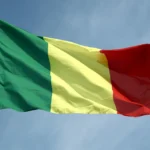
After almost five centuries under Portuguese colonial rule, Mozambique achieved its long-awaited independence in 1975. This momentous event signified a major turning point in the country’s history, heralding the birth of a new era. With newfound autonomy, Mozambique embarked on a journey of nation-building, as it sought to establish its own government and shape its own destiny. However, this transition was not without its challenges, as the nation faced the daunting task of rebuilding and addressing various social, economic, and political issues in the aftermath of colonialism. Nonetheless, the attainment of independence marked the beginning of a significant chapter in Mozambique’s story.
Mozambique is situated in southeastern Africa, with a coastline stretching over 2,470 kilometers (1,535 miles) along the Indian Ocean. It shares land borders with six neighboring countries, including Tanzania to the north, Malawi and Zambia to the northwest, Zimbabwe to the west, Eswatini (formerly Swaziland) to the southwest, and South Africa to the south.
Maputo, situated in the southern part of the country near the border with Eswatini, serves as the capital and largest city of Mozambique. It is a bustling port city with a vibrant cultural scene, historical landmarks, and a mix of modern and colonial architecture.
Mozambique’s official language is Portuguese, a remnant of the country’s history as a former Portuguese colony. Portuguese is widely spoken and used in government, administration, education, media, and business sectors. However, numerous indigenous languages, including Emakhuwa, Xichangana, and Elomwe, are also spoken by different ethnic groups throughout the country.
With its expansive territory, Mozambique ranks as the 35th largest country globally in terms of land area. Its diverse landscape encompasses vast plains, rugged mountains, fertile river valleys, and pristine coastal regions.
The cultural fabric of Mozambique is shaped by a diverse range of influences. Indigenous Bantu traditions form the foundation, while centuries of Arab and European interactions have contributed to the country’s cultural tapestry. This blend is evident in the music, dance, art, cuisine, and traditional practices found throughout Mozambique.
Mozambique is home to a population of more than 30 million individuals. The people of Mozambique represent various ethnic groups, with the largest being the Makhuwa, Tsonga, Shangaan, and Yao. Additionally, there are significant populations of Europeans, Indians, and Chinese residing in the country.
Despite its vast potential and natural resources, Mozambique faces significant socio-economic challenges. It is considered one of the world’s poorest countries, with a low gross domestic product (GDP) per capita and high poverty rates. Efforts to combat poverty and promote economic development remain ongoing priorities for the government and international partners.
Mozambique Island, located off the northern coast of the country, is a UNESCO World Heritage Site renowned for its historical significance. As a strategic trading post, it played a crucial role in facilitating trade between Arab, Indian, and Portuguese merchants during the 16th century. The island’s architecture and cultural remnants serve as a testament to this vibrant period of trade and cultural exchange.
Following independence, Mozambique was engulfed in a brutal civil war that lasted from 1977 to 1992. The conflict pitted the ruling Mozambique Liberation Front (FRELIMO) against the Mozambican National Resistance (RENAMO). The war caused immense suffering, with the loss of hundreds of thousands of lives and widespread destruction of infrastructure, including schools, hospitals, and agricultural systems. The peace agreement signed in 1992 marked a turning point, allowing Mozambique to begin the process of reconstruction and national healing.
The Mozambican metical serves as the official currency of Mozambique. It is denoted by the symbol “MT” or “MTn.” The metical is subdivided into 100 centavos, although due to inflationary pressures, the centavo coins are no longer in circulation.
Mozambique boasts a diverse and picturesque natural landscape. Inland, you’ll find expansive savannah grasslands teeming with wildlife, such as elephants, zebras, and antelopes. The country also features mountain ranges, including the Chimanimani Mountains in the east. Additionally, Mozambique’s coastline offers stunning beaches, coral reefs, and mangrove forests.
Located on the southeastern coast of Africa, Mozambique is susceptible to natural disasters, particularly cyclones and flooding. The country’s coastal position exposes it to tropical cyclones that form over the Indian Ocean, bringing heavy rainfall, strong winds, and storm surges. As a result, Mozambique has implemented measures to mitigate the impact of these natural hazards and enhance disaster preparedness.
The Zambezi River, one of Africa’s major waterways, traverses several countries, including Mozambique. It serves as a vital source of water, transportation, and hydroelectric power for the region. The Zambezi River is renowned for its stunning Victoria Falls, a UNESCO World Heritage Site, located on the border between Zambia and Zimbabwe.
Gorongosa National Park is a biodiverse conservation area situated in central Mozambique. After experiencing significant setbacks during the civil war, the park has undergone extensive restoration efforts. It is now home to a wide range of wildlife, including large populations of elephants, lions, hippos, zebras, and various bird species. Gorongosa National Park offers visitors the opportunity to witness and appreciate Mozambique’s natural heritage.
Mozambique experiences a tropical climate characterized by distinct wet and dry seasons. The wet season typically lasts from October to March, with abundant rainfall and high humidity. The dry season, from April to September, brings drier and cooler conditions, making it a popular time for tourism and outdoor activities.
Agriculture plays a crucial role in Mozambique’s economy, employing a significant portion of the population. The country’s fertile land allows for the cultivation of various crops, including cashew nuts, cotton, sugar, tobacco, and tropical fruits. These agricultural products serve as important exports, contributing to the country’s economic growth and foreign exchange earnings.
Mozambique possesses substantial natural resource reserves, offering economic potential for the country. Notably, it has significant deposits of natural gas, coal, titanium, tantalum, graphite, and other minerals. Exploitation and extraction of these resources, along with responsible management, have the potential to contribute to Mozambique’s economic development.
Mozambique’s tourism industry is gradually gaining prominence. The country’s stunning coastline, with its white sandy beaches and crystal-clear waters, attracts beach enthusiasts, snorkelers, and scuba divers. Mozambique’s rich historical heritage, including colonial-era architecture and UNESCO World Heritage Sites, appeals to cultural and history enthusiasts. Additionally, wildlife reserves and national parks, such as Gorongosa and Bazaruto, offer opportunities for safari experiences and eco-tourism.
Mozambique actively participates in regional and continental organizations. As a member of the Southern African Development Community (SADC), Mozambique collaborates with neighboring countries to enhance economic integration, political stability, and regional development. Additionally, Mozambique is part of the African Union (AU), which focuses on promoting unity, peace, and socio-economic progress across the continent.
FRELIMO, a political and military movement, led the struggle for independence from Portuguese colonial rule in Mozambique. Established in 1962, FRELIMO fought a guerilla war against Portuguese forces, eventually leading to Mozambique’s independence in 1975. FRELIMO has remained a prominent political party in Mozambique since then.
Mozambique is known for its cultural diversity, housing numerous ethnic groups. The Makhuwa form the largest ethnic group in Mozambique, comprising several subgroups. Other significant ethnic communities include the Tsonga, Shangaan, Yao, Sena, and Chopi, among others. Each group contributes to the country’s cultural heritage through their unique traditions, languages, and customs.
The Mozambican Civil War, spanning from 1977 to 1992, was a devastating conflict that severely impacted the country. Fought between FRELIMO and RENAMO, the war caused immense human suffering, with an estimated one million deaths. The conflict also led to widespread destruction of infrastructure, including schools, hospitals, and transportation systems, hindering development and progress.
Music holds a significant place in Mozambican culture, reflecting its diverse heritage. Marrabenta, a popular genre, originated in the early 20th century and combines traditional African rhythms with Portuguese influences. In recent years, a fusion genre called marrabenta-rock has emerged, infusing traditional marrabenta with contemporary elements like electric guitars and rock instrumentation. These genres, along with other traditional and modern styles, contribute to Mozambique’s vibrant music scene.
The flag of Mozambique represents various aspects of the country’s identity and history. The horizontal stripes symbolize different elements: green represents the country’s natural resources and agriculture, black represents the African continent, and yellow represents Mozambique’s mineral wealth. The red triangle on the hoist side signifies the struggle for independence and the sacrifices made by Mozambique’s people.








